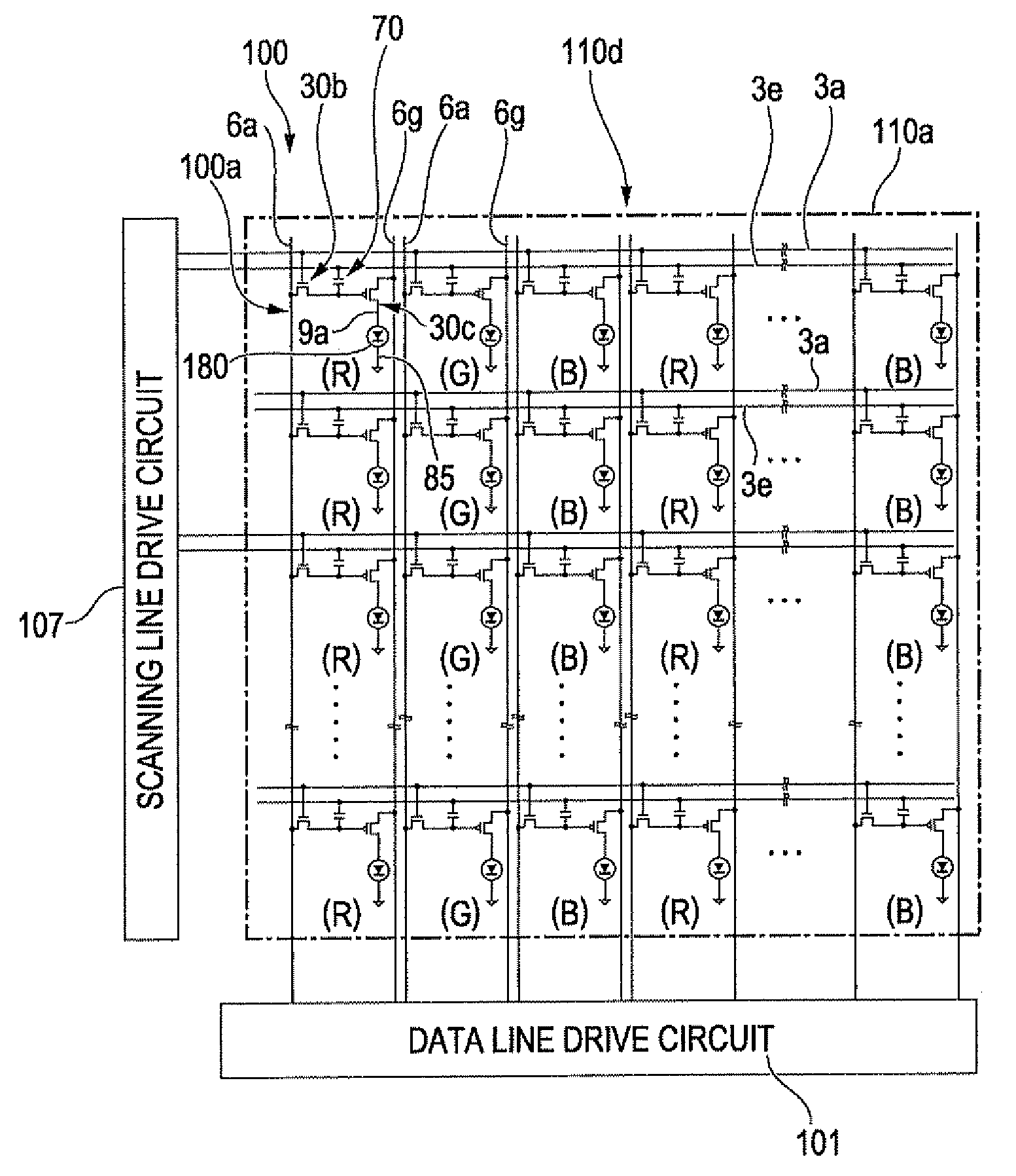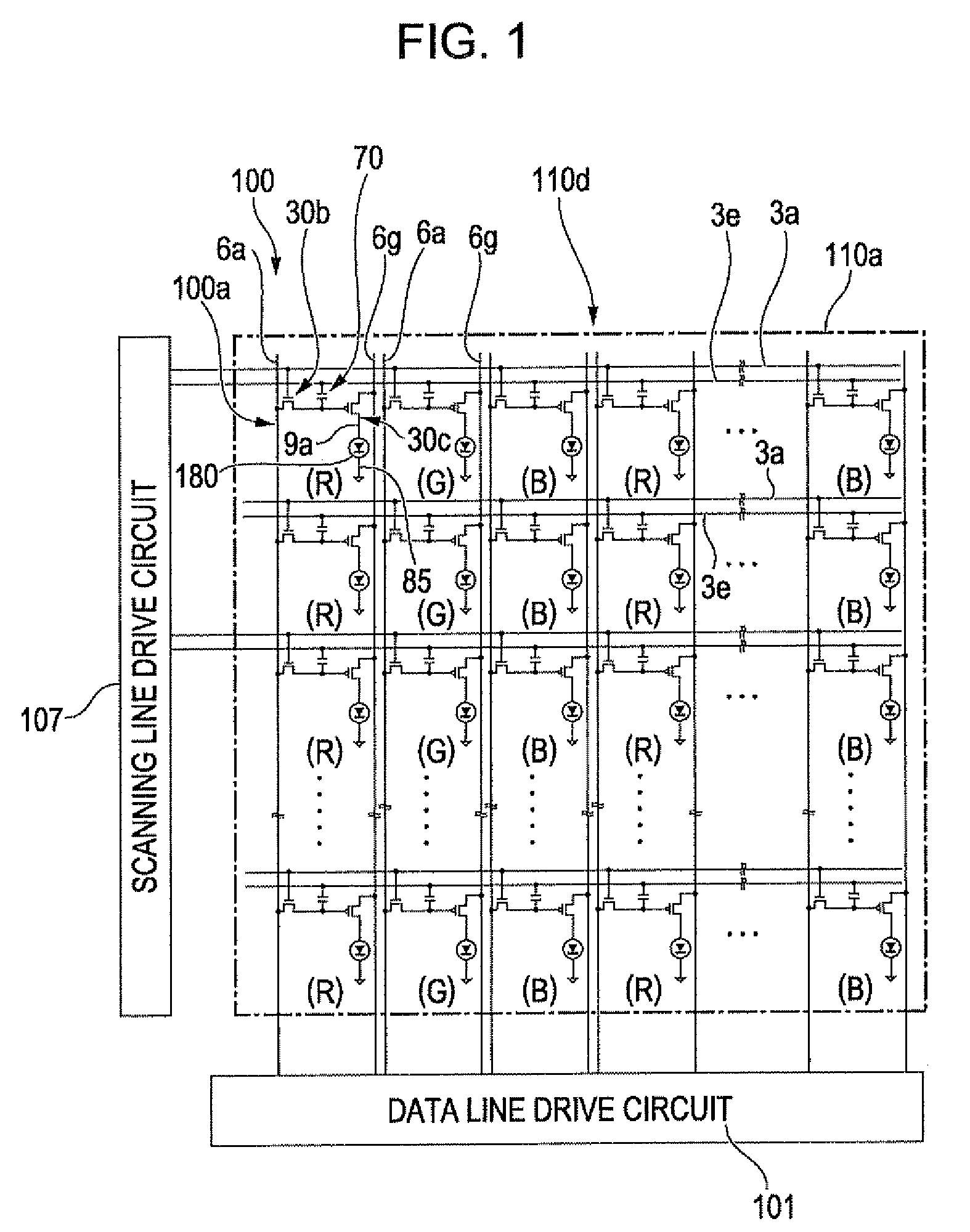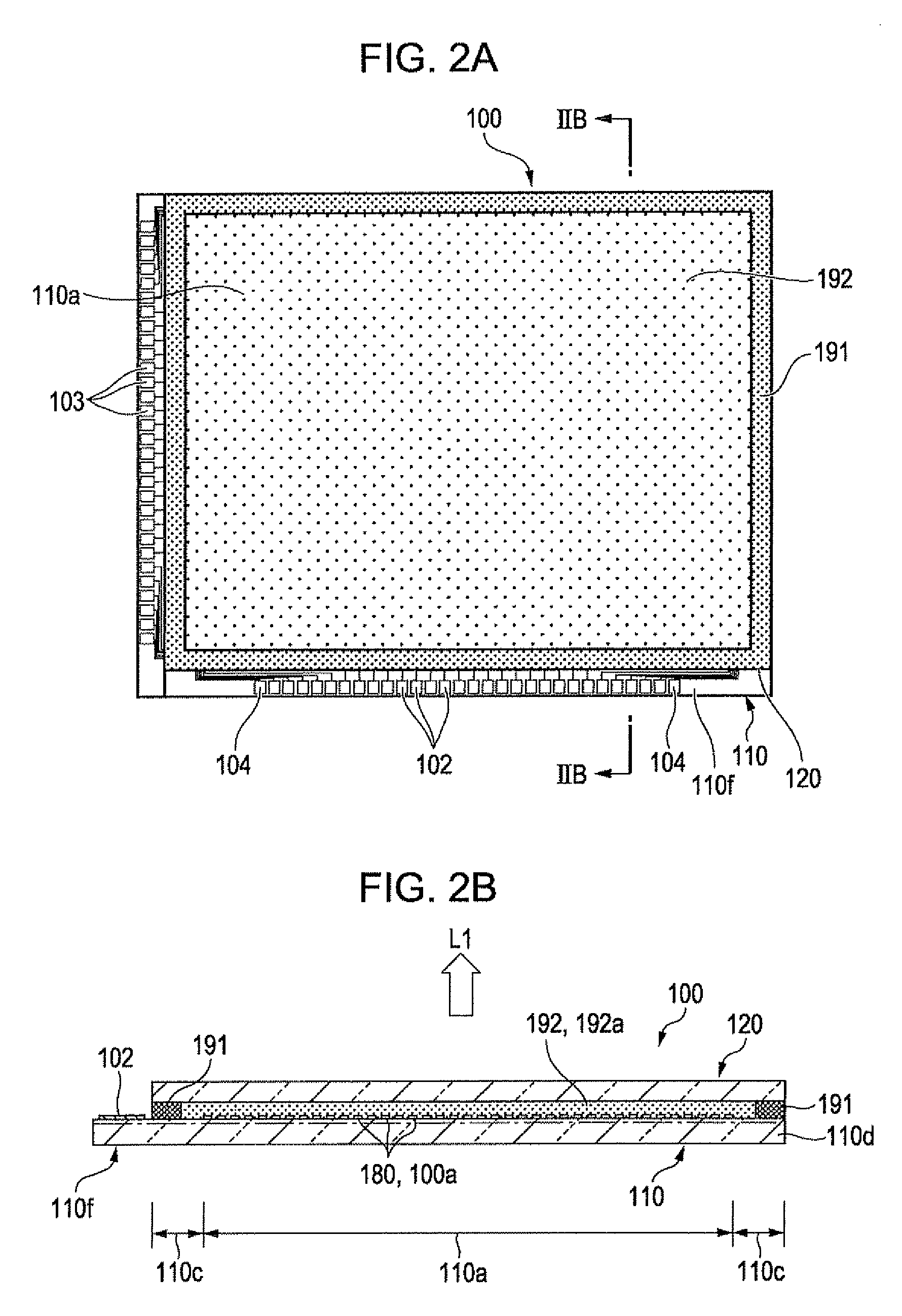Organic electroluminescent device and electronic apparatus
a technology of electroluminescent devices and electronic devices, which is applied in the direction of discharge tubes/lamp details, discharge tubes luminescnet screens, electric discharge lamps, etc., can solve the problems of large electrical resistance of second electrode layers, liable to generate the variations of luminescent light, and the above-mentioned problems, etc., to achieve high electric resistance, small area, and wide area
- Summary
- Abstract
- Description
- Claims
- Application Information
AI Technical Summary
Benefits of technology
Problems solved by technology
Method used
Image
Examples
embodiment 1
[0045]FIG. 1 is a block diagram showing an electrical structure of an organic EL device of the invention. FIG. 2A is a plan view of an organic EL device of the invention when viewed from a second substrate (sealing substrate) side, and FIG. 2B is a cross-sectional view taken along the line IIB-IIB shown in FIG. 2A.
[0046]An organic EL device 100 shown in FIG. 1 has a first substrate 110 used as an element substrate, a plurality of scanning lines 3a, a plurality of data lines 6a extending in a direction intersecting the scanning lines 3a, and pixels 100a provided at positions corresponding to the intersections between the scanning lines 3a and the data lines 6a, and a region in which the pixels 100a are disposed in a matrix forms a pixel region 110a.
[0047]In addition, on the first substrate 110, a plurality of power lines 6g extends parallel to the data lines 6a, and a plurality of capacity lines 3e extends parallel to the scanning lines 3a. A data line drive circuit 101 is connected...
embodiment 2
[0080]FIG. 6A is a schematic cross-sectional view of an organic EL device according to Embodiment 2 of the invention, and FIG. 6B is a schematic plan view of the first substrate 110 of the organic EL device shown in FIG. 6A, FIGS. 6A and 6B corresponding to FIGS. 3A and 3B, respectively, shown in Embodiment 1. FIG. 7A is a schematic view illustrating a plan structure of an electrical connection portion between a terminal and auxiliary wires (second electrode layer) on the first substrate 110 of the organic EL device according to Embodiment 2 of the invention, and FIG. 7B is a cross-sectional view taken along the line VIIB-VIIB shown in FIG. 7A, FIGS. 7A and 7B corresponding to FIGS. 5A and 5B, respectively, shown in Embodiment 1. Since the basic structure of this embodiment is similar to that of Embodiment 1, like elements are designated by the same reference numerals and a description thereof will be omitted.
[0081]As shown in FIGS. 6A, 6B 7A, and 7B, also in the organic EL device 1...
embodiment 3
[0086]FIG. 8A is a schematic cross-sectional view of an organic EL device according to Embodiment 3 of the invention, and FIG. 8B is a schematic plan view of the first substrate 110 of the organic EL device shown in FIG. 8A, FIGS. 8A and 8B corresponding to FIGS. 3A and 3B, respectively, shown in Embodiment 1. FIG. 9A is a schematic view illustrating a plan structure of an electrical connection portion between a terminal and auxiliary wires (second electrode layer) on the first substrate 110 of the organic EL device according to Embodiment 3 of the invention, and FIG. 9B is a cross-sectional view taken along the line IXB-IXB shown in FIG. 9A, FIGS. 9A and 9B corresponding to FIGS. 5A and 5B, respectively, shown in Embodiment 1. Since the basic structure of this embodiment is similar to that of each of Embodiment 1 and 2, like elements are designated by the same reference numerals and a description thereof will be omitted.
[0087]As shown in FIGS. 8A, 8B, 9A, and 9B, also in the organi...
PUM
 Login to View More
Login to View More Abstract
Description
Claims
Application Information
 Login to View More
Login to View More - R&D
- Intellectual Property
- Life Sciences
- Materials
- Tech Scout
- Unparalleled Data Quality
- Higher Quality Content
- 60% Fewer Hallucinations
Browse by: Latest US Patents, China's latest patents, Technical Efficacy Thesaurus, Application Domain, Technology Topic, Popular Technical Reports.
© 2025 PatSnap. All rights reserved.Legal|Privacy policy|Modern Slavery Act Transparency Statement|Sitemap|About US| Contact US: help@patsnap.com



